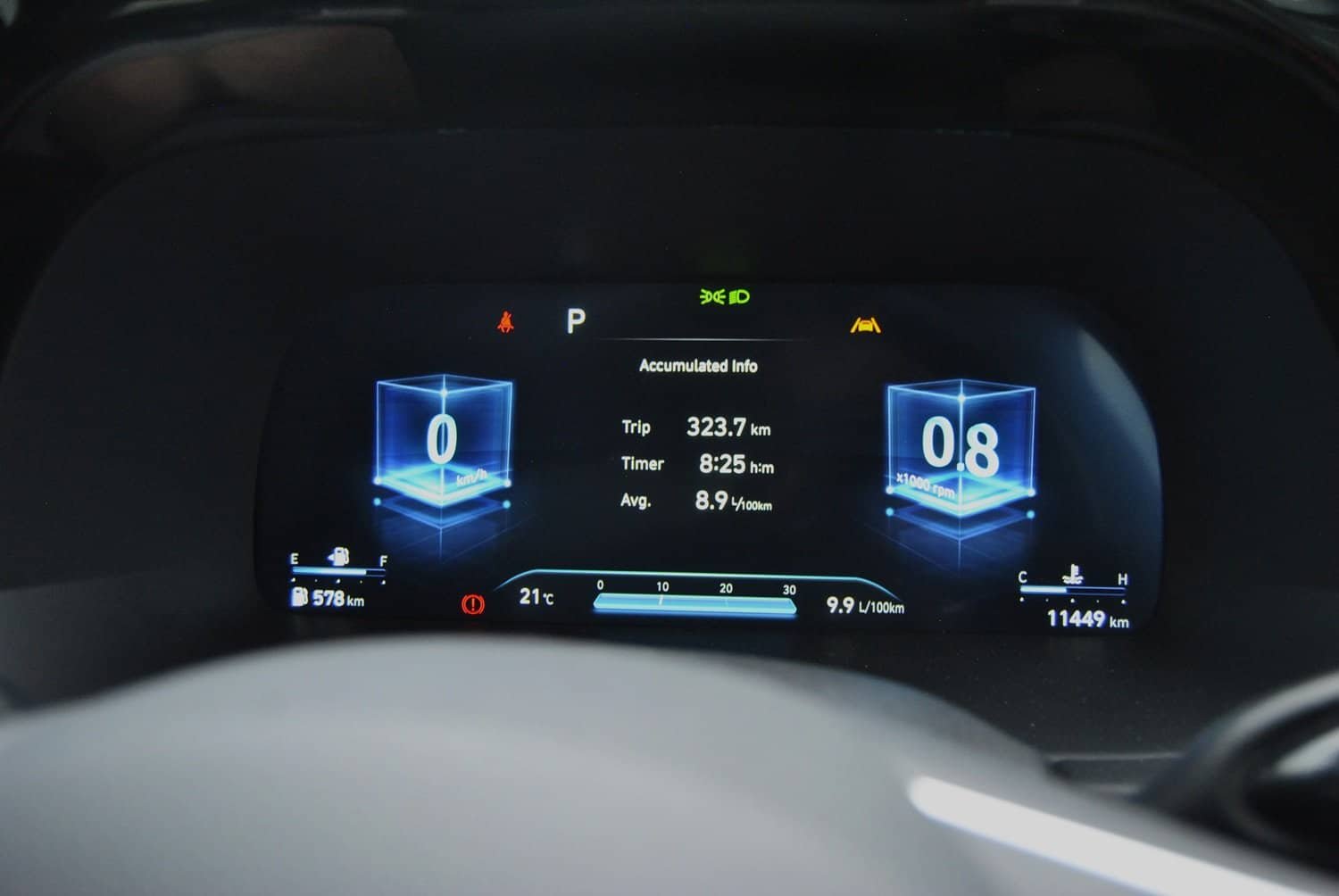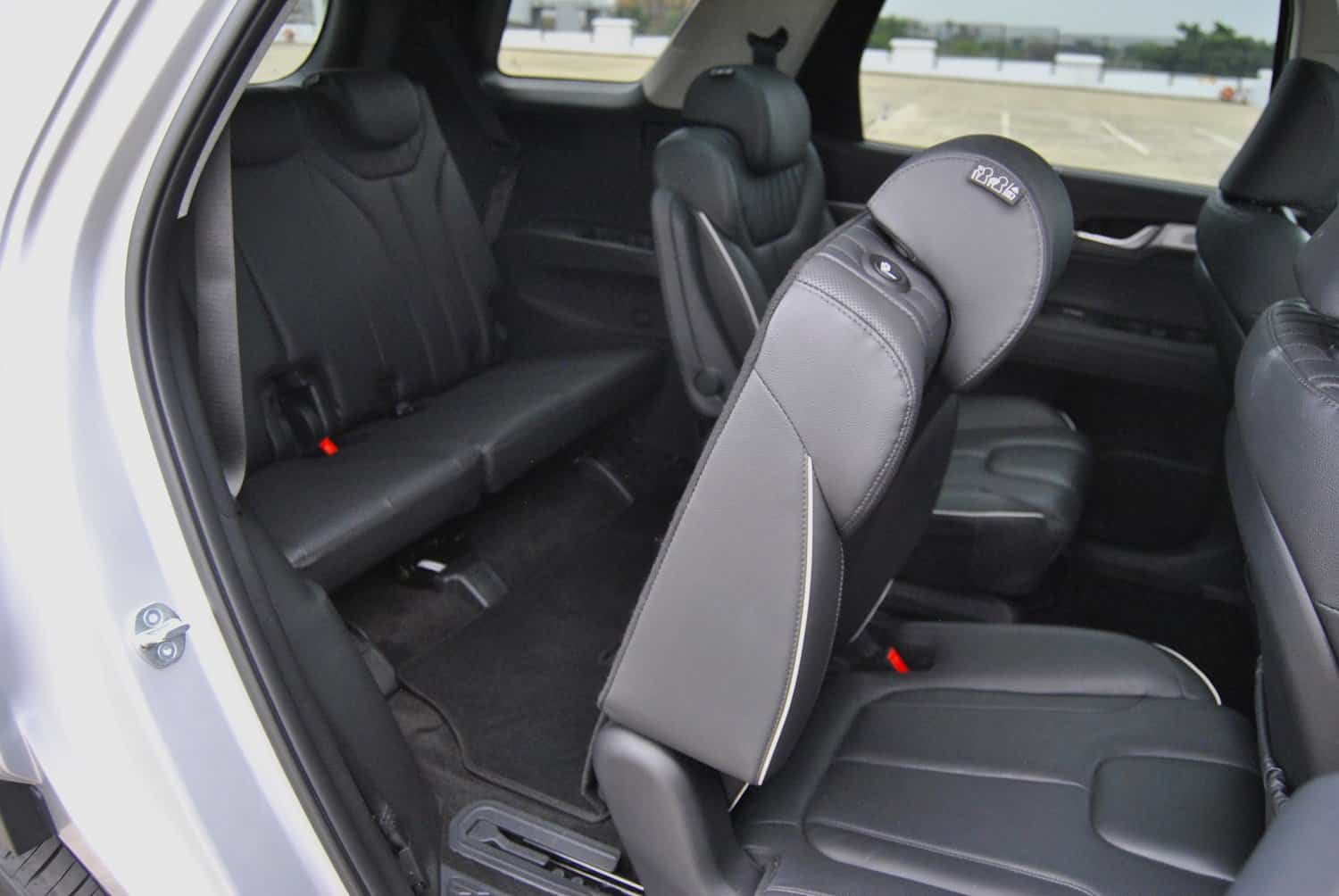[bsa_pro_ad_space id=14]
Questions of the suitability of the 2.2-litre turbodiesel engine seemed uncalled for, but the supposed logic was clear.
When Hyundai debuted the Palisade at the Los Angeles Auto Show almost exactly five years ago, its target market was a clear one; the United States first, and others later.
Tough introduction
Named after the affluent Pacific Palisades neighbourhood of the City Angles, the Palisade offered a choice of front-or-all-wheel-drive, seven or eight seats and a normally aspirated 3.8-litres V6 petrol engine developing 217kW/355Nm.
ALSO READ: Fully loaded facelift Hyundai Palisade has what it takes
Despite sales surpassing 80 000 units since its debut, the Palisade has, nonetheless, been struggling not only against its main Stateside rivals, but also sister brand Kia’s Cadillac Escalade-styled Telluride.
Whereas sales in 2022 came to 82 688, a total of 99 564 Tellurides found homes at the same time. Even bleaker is the outlook for this year where at the end of October, Palisade offset stood at 65 928 versus the Telluride’s 92 514.
Not giving up

An apparent willingness to “re-engineer” the Palisade with right-hand-drive following extensive lobbying from Australia soon followed, which predictably opened the door for South Africa to receive what is still the Korean giant’s biggest SUV above the Santa Fe.
Approved for the local market at the end of 2020, sales have been similarly slow as the thought of paying one rand short of R1-million for a Hyundai seemed nonsensical at a time when the brand was still viewed as more about value than premium.
In spite of having shifted 361 units since going on-sale two years ago, Hyundai South Africa has stuck with the Palisade and after the debut of the facelift at the New York International Auto Show last year, officially debuted the reworked behemoth at the end of February this year.

Again offered in a single trim level, the Elite, with a solitary drivetrain option, standard all-wheel-drive and eight seats with seven available at no extra cost or credit, the seven-day stay involving the latter not only had to answer the value proposition of a model now costing R1 144 500, but also how it copes in everyday life with the lacklustre 2.2-litre turbodiesel engine underneath its bonnet.
As it turned out, the powerplant had its own ideas on how to win back face after the February launch, but for a probable reason that became apparent as the Shimmering Silver Palisade’s tenure came to an end.
In your face
Against the backdrop of four other colour options, the Palisade strikes a typical imposing American figure in spite of being produced in South Korea.
Focused, it would seem, on being as aggressive as possible, the Palisade has not only had its 20-inch alloy wheels restyled, but its grille made flatter, squared-off and finished in gloss black chrome as opposed to the previous conventional chrome brightwork.

A change that has given the Palisade more presence, Hyundai has also changed the lower air intake, made colour coded wheel arch cladding available in all five colours, and reworked the split headlight design so that the slimmer main clusters are now connected by the L-shaped lower section by means of a single rectangular diode integrated into the bumper.
Called the “flow-down look”, it only adds to the Palisade’s newfound aggression and is rounded off by a new rear bumper with horizontal side reflectors, darkened taillight clusters with new LEDs, and a novel skidplate at the bumper’s base.
Slide inside
Inside, Hyundai has left little to chance as besides the inherent ergonomic mess that is the button and dial festooned centre console, both the infotainment system and instrument cluster are new, but presented in such a way that neither appears hurriedly slot-in.

Displacing 12.3-inches each, the displays replace the previous 10.25-inch setups, of which the infotainment system never made it to South Africa as Hyundai initially opted for a small eight-inch.
Appearing difficult to fathom, the opposite applies as the system works well and apart from Apple CarPlay and Android Auto, comes additionally furnished with satellite navigation.

Equipped with the same steering wheel as the Staria, the aforementioned console, which also houses the buttons for the shift-by-wire eight-speed automatic transmission, is finished in imitation aluminium and although appearing cheap, is ergonomically sound and of such quality that the lofty price tag starts making sense.

Along with soft-touch plastics and chunky shortcut buttons underneath the air vents, the Palisade’s fit-and-finish leaves very little to be desired, especially as Hyundai has resisted to urge to expand on using piano key black detailing than around the infotainment system.
How about space?

Unsurprisingly spacious, the Palisade’s biggest accolade remains practicality. While the lack of middle seat in the second-row between the pair of captain’s style chairs admittedly can be seen as defeating the purpose of a large SUV, the “gap” massively aids third-row entry as almost no use is needed to have the seats slide forward.
The absence of the middle chair also helps with third row regroom, though it has to be said, space is impressive and could even be considered for small adults.

Even with all seven, or eight for that matter, seats in use, the Palisade’s boot is massive as Hyundai claims a cargo capacity of 509-litres with all three rows in use.
Dropping the third row frees up an additional 738-litres for a total of 1 247-litres, however, while 2 447-litres ultimately becomes available with second row also down.

However, the lack of the central seat shows up rather painfully as the “gap” all but eliminates the van-esque flat floor design often required for bulkier items.
You want features?
This, though, can be seen as nitpicking as a quick glance at the Palisade’s spec sheet almost nullifies the missing seat.

Beside the captain’s chairs having their own armrests plus heating and ventilations functions, both eight and seven Palisades are outfitted with a 12-speaker Infinity sound system, heated, electric and cooled front seats, tri-zone climate control, an electric tailgate, rear window blinds, a heated steering wheel, a wireless smartphone charger hidden with the cupholders inside the massive central storage cubby, and a dual-pane panoramic sunroof that resoundingly fails to impact on rear passenger headroom.
If this isn’t already enough, Hyundai has equipped it with nearly every type of safety and driver assistance system at its disposal.

This includes a tyre pressure monitor and surround-view camera system, Rear Cross Traffic Alert, Adaptive Cruise Control, Rear Seat Alert, Trailer Stability Assist, Blind Spot Collision Avoidance Assist, Safe Exit Assist, Forward Collision Avoidance Assist, Lane Keep Assist, Junction Assist and Lane Follow Assist.
The small elephant in the room
Best described as the definition of a “fully kitted-out” SUV, the Palisade’s biggest point of criticism following the launch, its on-paper underpowered engine, showed a bit more urge, but for a likely good reason.
Entrusted with having to move 1 956 kg without any people aboard, the oil-burner delivers 75 kW less power than the V6, but 85 kW more torques for a total of 142kW/440Nm.

Found to be lacking at the national limit, and in constant wanting for more punch it cannot deliver, the low-down pull remains sufficient. but in this case, not merely “adequate” previously described.
The likely reason? The engine could well have “loosened-up” or in other words, been properly run-out the examples at the unveiling were not.

That being said, selecting Sport mode was another story. One of seven driving modes presents, the others being Eco, Comfort, Smart and the Snow, Mud and Sand terrain settings, turning the rotary dial to the conspicuous chequered flag icon revealed a different side to the Palisade.
Unsurprisingly quicker off the mark and with sharper throttle response, the setting does provide spritelier progress, but will probably be used a lot less in everyday situations than Eco, Smart or indeed Comfort that was selected the most.
American comfort
The latter is perhaps the best description of the Palisade on the move as besides seat comfort and refinement, the ride on the 20-inch wheels and suspension tuning borders on sublime as the ride is soft, but not prone to fall apart when the road becomes lumpy.

Adding to the slick shifting automatic ‘box and surefooted feel as a result of the HTRAC all-wheel-drive system, the Palisade doesn’t feel the massive leviathan it is on the road, or even in tight areas such as parking lots.
What’s more, the loosened-up engine did find favour on the consumption front with an indicated best of 8.3 L/100 km after the seven days and 445 km – exactly 0.1 L/100 km off Hyundai’s claim.
Conclusion
Compromising, in this case power for spec, might well remain the detriment of the Hyundai Palisade as a more powerful engine, perhaps the 3.0-litre straight-six from the upscale Genesis marque, would have been better suited with its 205kW/588Nm.

The trade-off though would have been less spec and a significantly higher price that would have negated Palisade sales even more and most likely left Hyundai South Africa with no option but to withdraw it for being too expensive.
As is stands, the Palisade remains a left-field option, but one that offers remarkable value-for-money no other comparative SUV will come close to matching.
NOW READ: Refreshed Hyundai Palisade shows itself
[bsa_pro_ad_space id=15]
